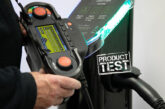
Basic multifunction installation testers do a great job, but Megger’s Simon Wood believes there are many electrical contractors who would get big benefits by taking a step up to an instrument with extra features and facilities.
When buying test equipment, and particularly when buying a multifunction tester (MFT),it’s only natural for electrical contractors to gravitate toward the most basic instruments. After all, the manufacturers assure users that these will do everything needed to test an installation in line with the requirements of the IET Wiring Regulations, so what reason is there to choose anything more sophisticated?
Actually, there can be several good reasons. Consider, for example, RCD testing which, as contractors will know, actually involves carrying out a sequence of five tests on each RCD. Basic MFTs will perform these tests perfectly well, but have the limitation that after each test in the sequence, it’s necessary to go to the RCD and reset it, then return to the instrument to initiate the next test in the sequence.
“The Megger MFT1720 conforms to all the requirements of the 3rd Amendment. The unit is light but tough; it has a large backlit display and timesaving facilities that include two-wire non-trip loop testing, auto-start continuity testing and optional pass/fail RCD testing.”
With the much greater use of RCDs, as required by the recent revision to the IET Wiring Regulations, this walking back and forth can add up to a lot of time, especially in larger properties. With a slightly more sophisticated MFT that features automatic RCD testing, this problem is entirely eliminated.
With an instrument of this type, all the user needs to do is to start the test sequence at the instrument, return to the RCD and reset it each time it trips until the test sequence is complete. There is no need to return to the instrument after each individual test. This is much more convenient and the time savings can be substantial.
Look to the future
While considering RCD tests, it’s worth mentioning that some basic MFTs can test only Type AC RCDs, which are designed to operate with pure AC currents. At present, this is may not be a serious limitation as this is by far the most widely used type.
Things are, however, starting to change and Type A RCDs, which operate with AC and pulsating DC currents are becoming far more common, particularly in electric vehicle charging point applications. It is, therefore, very useful to have an MFT that can test these Type A devices and, ideally, other types such as Type S (time-delayed) and programmable RCDs.
Another invaluable extra feature that is typically only found on mid- to top-end MFTs is automatic retention of the of Zmax value when performing multiple loop tests. Once again, this may seem to be no more than a minor benefit, but for those who carry out testing day in, day out, it does usefully address those occasions, when testing multiple sockets on a ring, where it would otherwise be necessary to remember the highest value measured!
There are, of course, certain features that all MFTs, whether they’re basic, mid-range or top-end models should offer, and it’s important never to sacrifice these when looking for extra functionality. The essentials include a CAT IV 300 V safety rating in line with EN61010, rugged construction so that the instrument can stand up to tough on-site conditions, simplicity of use, a large, easy-to-read display and an IP rating that ensures the meter will operate in a dusty environment – or outside, even when the British weather lives up to it’s reputation!
MFT1720 Multifunction Tester
The Megger MFT1720 conforms to all the requirements of the 3rd Amendment. The unit is light but tough; it has a large backlit display and timesaving facilities that include two-wire non-trip loop testing, auto-start continuity testing and optional pass/fail RCD testing. The MFT1720 has a CAT IV 300 V safety rating in line with BS EN 61010, which makes it safe to use on all areas of low voltage electrical installations both inside and out. It offers insulation testing at 250 V, 500 and 1 KV, continuity testing at 200 mA and 15 mA, and two- and three-wire non-trip loop testing. Fast high-current loop testing for use on circuits that are not RCD protected is also supported, along with display of maximum Zs and R1 + R2 for circuit verification.








